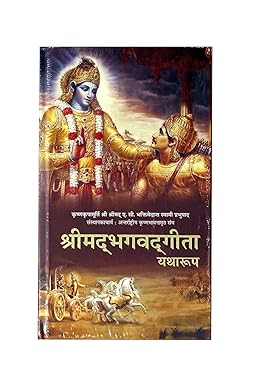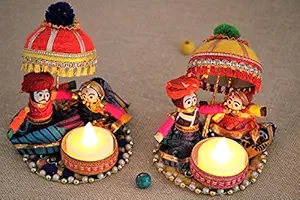कुंभ मेले की उत्पत्ति: पौराणिक कथाओं और इतिहास का संयोजन
कुंभ मेला दुनिया के सबसे महत्वपूर्ण आध्यात्मिक समागमों में से एक है, जिसकी जड़ें भारतीय पौराणिक कथाओं और इतिहास में गहराई से जुड़ी हुई हैं। इसकी उत्पत्ति रहस्य और ऐतिहासिकता को आपस में जोड़ती है, जिससे एक ऐसा त्यौहार बनता है जो समय, संस्कृति और भूगोल से परे है। गंगा, यमुना और पौराणिक सरस्वती नदियों के संगम पर हर 12 साल में आयोजित होने वाला महाकुंभ मेला आध्यात्मिक मुक्ति की तलाश में लाखों भक्तों को आकर्षित करता है। आइए इस भव्य आयोजन के पीछे की आकर्षक कहानी के बारे में जानें।
पौराणिक उत्पत्ति
कुंभ मेले की किंवदंती प्राचीन हिंदू धर्मग्रंथों, **पुराणों** की एक महाकाव्य कहानी **समुद्र मंथन** से जुड़ी है। कहानी के अनुसार, **देव** (देवता) और **असुर** (राक्षस) वर्चस्व की लड़ाई में लगे हुए थे। वे अमरता का अमृत निकालने के लिए समुद्र मंथन करने के लिए सहमत हुए। मंदरा पर्वत को मंथन की छड़ी के रूप में इस्तेमाल किया गया था, और नाग राजा वासुकी ने रस्सी के रूप में काम किया।
जैसे-जैसे मंथन आगे बढ़ा, अमृत से भरा एक बर्तन (कुंभ) निकला। असुरों को अमृत पर नियंत्रण पाने से रोकने के लिए, देवताओं ने बर्तन भगवान विष्णु को सौंप दिया। एक भयंकर पीछा शुरू हुआ, और 12 दिन और रात (12 मानव वर्षों के बराबर) के दौरान, अमृत पृथ्वी पर चार स्थानों पर गिरा: **प्रयागराज**, **हरिद्वार**, **उज्जैन**, और **नासिक**। ये स्थल पवित्र हो गए, और प्रत्येक स्थान पर चक्रीय तरीके से कुंभ मेला मनाया जाता है।
ऐसा माना जाता है कि इन स्थानों के साथ अमृत के जुड़ाव ने नदियों को शुद्ध करने वाले गुणों से भर दिया है। भक्तों का मानना है कि कुंभ मेले के दौरान इन जल में पवित्र डुबकी लगाने से पाप धुल जाते हैं और आध्यात्मिक पुण्य प्राप्त होता है।
ऐतिहासिक उत्पत्ति
जबकि पौराणिक कथाएँ कुंभ मेले का आध्यात्मिक मूल हैं, इसकी ऐतिहासिक जड़ें भी उतनी ही आकर्षक हैं। कुंभ मेले जैसी सभाओं के संदर्भ महाभारत और ऋग्वेद जैसे प्राचीन ग्रंथों में पाए जा सकते हैं, जो नदियों की पवित्रता और अनुष्ठान स्नान की प्रथा पर जोर देते हैं।
कुंभ मेले का सबसे पहला प्रलेखित उल्लेख चीनी यात्री और विद्वान ह्वेन त्सांग के वृत्तांतों से आता है, जो 7वीं शताब्दी ई. में भारत आए थे। उन्होंने प्रयागराज में एक भव्य धार्मिक उत्सव का वर्णन किया, जहाँ लाखों लोग अनुष्ठान और दर्शन पर चर्चा के लिए एकत्रित होते थे। यह कुंभ मेले की पारंपरिक समयरेखा के साथ संरेखित है।
इस आयोजन को गुप्त वंश (4वीं से 6वीं शताब्दी ई.) के शासनकाल के दौरान प्रमुखता मिली, जिसे अक्सर भारतीय संस्कृति का स्वर्ण युग माना जाता है। गुप्तों द्वारा हिंदू धर्म का संरक्षण और धार्मिक सभाओं पर उनके जोर ने कुंभ मेले को सांस्कृतिक और आध्यात्मिक कैलेंडर में एक महत्वपूर्ण आयोजन के रूप में स्थापित करने में मदद की।
प्रतीकात्मकता और आध्यात्मिक महत्व
कुंभ मेला अच्छाई और बुराई के बीच शाश्वत संघर्ष का प्रतीक है, जैसा कि समुद्र मंथन में दर्शाया गया है। यह जीवन की क्षणभंगुर प्रकृति और आध्यात्मिक खोज के महत्व की याद दिलाता है। यह त्यौहार **विविधता में एकता** का प्रकटीकरण है, जो आस्था और भक्ति का जश्न मनाने के लिए जीवन के सभी क्षेत्रों के लोगों को एक साथ लाता है।
इसमें भाग लेने वाले तपस्वियों, साधुओं और संतों के लिए, कुंभ मेला सांसारिक आसक्तियों को त्यागने और दिव्य को अपनाने का अवसर है। आम तीर्थयात्रियों के लिए, यह आशीर्वाद प्राप्त करने, अपनी आत्मा को शुद्ध करने और एक प्राचीन परंपरा में भाग लेने का अवसर है जो समय की कसौटी पर खरी उतरी है।
कुंभ मेले का विकास
सदियों से, कुंभ मेला एक सुव्यवस्थित आयोजन के रूप में विकसित हुआ है, जिसमें परंपरा और आधुनिकता का मिश्रण है। आज, इसे यूनेस्को द्वारा **मानवता की अमूर्त सांस्कृतिक विरासत** के रूप में मान्यता दी गई है। लाखों आगंतुकों को समायोजित करने के लिए अत्याधुनिक बुनियादी ढाँचे वाले अस्थायी शहर बनाए गए हैं, जो इसे एक शानदार आयोजन बनाते हैं।
इस त्यौहार की स्थायी अपील इसकी आध्यात्मिक सार में गहराई से निहित रहते हुए बदलते समय के साथ अनुकूलन करने की क्षमता में निहित है। यह न केवल एक धार्मिक आयोजन है, बल्कि एक सांस्कृतिक घटना भी है जो दुनिया को भारत की समृद्ध विरासत दिखाती है।
निष्कर्ष
कुंभ मेले की उत्पत्ति पौराणिक कथाओं और इतिहास का एक सामंजस्यपूर्ण मिश्रण है, जो प्राचीन भारत के गहन आध्यात्मिक ज्ञान को दर्शाता है। चाहे इसे दैवीय किंवदंतियों के पुनरुत्पादन के रूप में देखा जाए या मानवीय भक्ति के प्रमाण के रूप में, कुंभ मेला विस्मय और श्रद्धा को प्रेरित करना जारी रखता है। इसकी कहानी हमें अमरता की शाश्वत खोज की याद दिलाती है, शाब्दिक अर्थ में नहीं, बल्कि आध्यात्मिक जागृति और शाश्वत शांति के रूपक के रूप में।
Introduction to Kumbh Mela
Historical Background
Kumbh Mela is one of the largest religious gatherings in the world celebrated every 12 years at four sacred river banks in India.
Significance in Hinduism
Kumbh Mela represents spiritual purification devotion and the cycle of life attracting millions of pilgrims for ritual bathing.
Major Locations
Kumbh Mela is celebrated in Haridwar Prayagraj Nashik and Ujjain each associated with sacred rivers and historical legends.
Frequency and Timing
Kumbh Mela occurs every 12 years with Ardh Kumbh every 6 years and Maha Kumbh every 144 years based on astrological positions.
Devotee Participation
Millions of devotees sadhus and pilgrims participate engaging in rituals prayers and cultural activities.
Mythological Origins
Story of Samudra Manthan
Kumbh Mela originates from the myth of Samudra Manthan where gods and demons fought for the nectar of immortality.
Droplets of Amrit
During the churning drops of Amrit fell at the four sacred river locations giving birth to the ritual of holy bathing during Kumbh Mela.
Significance of Ritual Bathing
Holy bathing in rivers is believed to cleanse sins purify the soul and bestow spiritual merit upon devotees.
Deities and Legends
Kumbh Mela honors Lord Vishnu Indra and other deities involved in the mythological story reinforcing faith and devotion.
Devotee Beliefs
Devotees believe participating in Kumbh Mela brings spiritual liberation blessings and fulfillment of prayers.
Historical Development
Ancient Records
Kumbh Mela is documented in historical texts inscriptions and traveler accounts dating back several centuries.
Medieval Period
Kumbh Mela continued to flourish during medieval India attracting kings saints and pilgrims from diverse regions.
Modern Era
Kumbh Mela today combines ancient rituals with modern infrastructure to manage millions of visitors safely.
Records by Travelers
Travelers like Xuanzang and European scholars documented the scale and spiritual significance of Kumbh Mela in India.
Cultural Integration
Kumbh Mela has influenced local culture art and traditions creating a unique religious and social ecosystem.
Rituals and Practices
Daily Rituals
Devotees perform prayers holy dips chanting and meditation along sacred rivers during the festival.
Saint and Sadhu Gatherings
Saints and sadhus congregate at Kumbh Mela to bless devotees conduct discourses and demonstrate spiritual practices.
Prayers and Offerings
Devotees offer flowers milk fruits and light lamps as part of devotional practices.
Holy Dips in Rivers
Taking holy dips at specific auspicious times is believed to cleanse sins and improve spiritual well-being.
Cultural Events
Cultural performances devotional singing and discourses enhance the spiritual experience of pilgrims.
Travel and Pilgrimage Guide
How to Reach
Kumbh Mela locations are accessible by road rail and air depending on the specific city hosting the festival.
Accommodation Options
Dharamshalas hotels and temporary tent arrangements are provided to accommodate millions of pilgrims.
Best Time to Visit
Astrological charts determine the auspicious bathing dates which are the ideal times to participate in Kumbh Mela.
Travel Tips
Devotees are advised to carry light luggage comfortable clothing and follow safety instructions during large gatherings.
Health and Safety
Medical camps and sanitation facilities are arranged for pilgrims to ensure a safe and healthy pilgrimage experience.
Kumbh Mela is one of the largest religious gatherings in the world celebrated every 12 years at four sacred river banks in India.
Kumbh Mela represents spiritual purification devotion and the cycle of life attracting millions of pilgrims for ritual bathing.
Kumbh Mela is celebrated in Haridwar Prayagraj Nashik and Ujjain each associated with sacred rivers and historical legends.
Kumbh Mela occurs every 12 years with Ardh Kumbh every 6 years and Maha Kumbh every 144 years based on astrological positions.
Millions of devotees sadhus and pilgrims participate engaging in rituals prayers and cultural activities.
Kumbh Mela originates from the myth of Samudra Manthan where gods and demons fought for the nectar of immortality.
During the churning drops of Amrit fell at the four sacred river locations giving birth to the ritual of holy bathing during Kumbh Mela.
Holy bathing in rivers is believed to cleanse sins purify the soul and bestow spiritual merit upon devotees.
Kumbh Mela honors Lord Vishnu Indra and other deities involved in the mythological story reinforcing faith and devotion.
Devotees believe participating in Kumbh Mela brings spiritual liberation blessings and fulfillment of prayers.
Kumbh Mela is documented in historical texts inscriptions and traveler accounts dating back several centuries.
Kumbh Mela continued to flourish during medieval India attracting kings saints and pilgrims from diverse regions.
Kumbh Mela today combines ancient rituals with modern infrastructure to manage millions of visitors safely.
Travelers like Xuanzang and European scholars documented the scale and spiritual significance of Kumbh Mela in India.
Kumbh Mela has influenced local culture art and traditions creating a unique religious and social ecosystem.
Devotees perform prayers holy dips chanting and meditation along sacred rivers during the festival.
Saints and sadhus congregate at Kumbh Mela to bless devotees conduct discourses and demonstrate spiritual practices.
Devotees offer flowers milk fruits and light lamps as part of devotional practices.
Taking holy dips at specific auspicious times is believed to cleanse sins and improve spiritual well-being.
Cultural performances devotional singing and discourses enhance the spiritual experience of pilgrims.
Kumbh Mela locations are accessible by road rail and air depending on the specific city hosting the festival.
Dharamshalas hotels and temporary tent arrangements are provided to accommodate millions of pilgrims.
Astrological charts determine the auspicious bathing dates which are the ideal times to participate in Kumbh Mela.
Devotees are advised to carry light luggage comfortable clothing and follow safety instructions during large gatherings.
Medical camps and sanitation facilities are arranged for pilgrims to ensure a safe and healthy pilgrimage experience.


